-
1st January 2014, 05:41 PM
#1
 Top 10 Transformers Gimmicks
Top 10 Transformers Gimmicks
Looking back at the last three decades of Transformers, we've had a plethora of all sorts of gimmicks. Here's my list of what I consider to be the top 10 gimmicks in Transformers...
10. Transformation
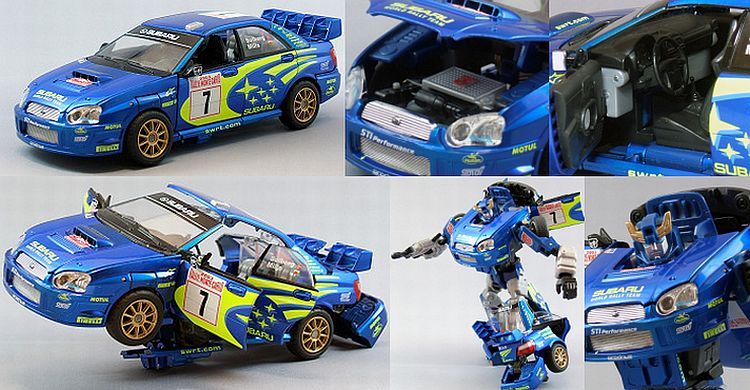
The "bread and butter" core gimmick of the franchise. Some manage to pull this off better than others, allowing us to marvel at the design and engineering poured into the individual figure. Others are quite forgettable, and some figures fall under the "product does not convert" category. :/ Realistic alt modes often prove popular as they play on the "robots in disguise" play pattern of Transformers. A fantasy vehicle or robotic animal just doesn't work as well as a licensed vehicle or realistic beast in terms of looking like something we would see in our real world. Lines such as Binaltech and Alternators were the exemplar of this concept, creating wonderful 1:24 scale highly detailed vehicles that could transform into amazing robots.
9. Auto-locomotion
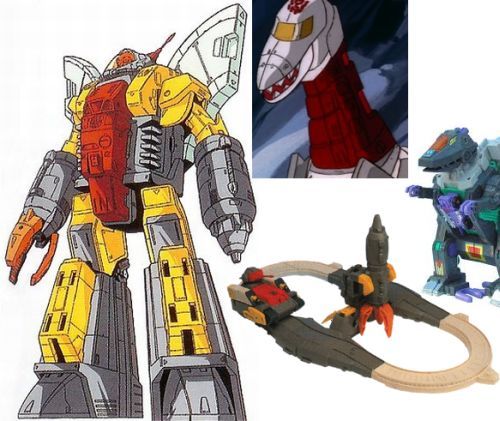
Toys that can move on their own due to some form of motorisation, e.g. battery powered, pull back spring powered etc. - it allowed toys to animate themselves either as vehicles and/or robots. It could very well be argued that these gimmicks compromised design of the Transformers themselves, but these sort of gimmicks have been used sparingly throughout the years (unlike say electronic sound gimmicks) and IMHO in most cases the benefits outweigh the compromises.
8. Rolling wheels
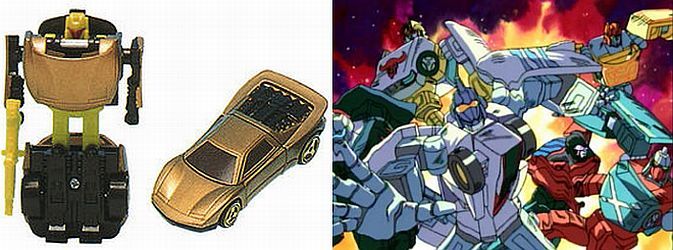
"Bro, do you even science?" Toys like the G2 Go-Bots and CR/RiD Spychangers use a gimmick based around a simple but effectual scientific principle: the conservation of momentum. All wheels spin freely on unbroken through-axles allowing the vehicle to travel relatively longer distances with relatively little effort/power. A small flick can send one of these toys rolling a long way on a smooth, flat surface. These toys were also built at the 1:64 scale, the traditional scale for models and miniatures such as your typical Hot Wheels and Matchbox cars. This also made them compatible with their play sets, such as launchers and ramps. The downside is that they all have the same transformation pattern, as diversity in robot forms is limited due to the fact that the axles cannot be disassembled. But considering how cheap these little toys were, who cares? They still give us a lot of value for our money. 
7. Rub signs
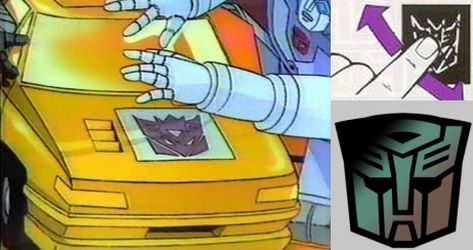
Again playing on the "robots in disguise" concept, rub signs meant that a Transformer's allegiance was obscured until heat was applied to the faction insignia by rubbing it. This worked particularly well on smaller toys that didn't have any other faction logos that would effectively work as "spoilers," but not so much on larger toys. e.g. G1 Beachcomber only has a rub sign to tell you his faction, whereas the G1 Seekers have massive Decepticon logo stickers that already tell who they are, which kinda makes the rub signs superfluous. Nonetheless, they were one of the more iconic (heh) gimmicks of early G1. This gimmick would be later revived in some Beast Wars toys. Car Robot then took a new twist on this gimmick with the Spy Changers by actually using heat-sensitive paint, so you actually have to rub the toy itself to reveal the Autobot insignia! The traditional rub sticker has been revived in other subsequent lines, such as Classics and Reveal the Shield.
6. Binary-bonding
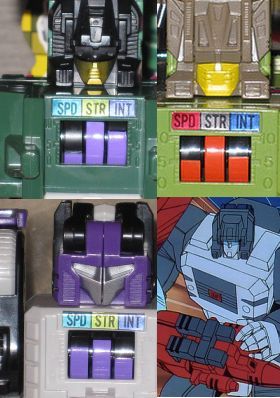
Not everyone's cube of Energon, but I personally like the concept of Transformers having either their weapons or parts of their body being able to transform as secondary component characters. From a fantasy POV it was like the ultimate 'Human Alliance'. This gimmick was arguably done better in 1987. The Targetmasters featured 5mm posts (see below), and the Headmasters had their Tech Specs Meter gimmick (known in the Japanese Headmasters series as "Cross Head On!"). The Headmaster's traits (i.e. strength, intelligence, speed) would vary depending on which Nebulan he was binary bonded to. Any 1987 Headmaster Nebulan can be attached to any 1987 Headmaster Autobot/Decepticon. Unfortunately this gimmick was not carried on with the 1988 Headmasters. Breast Force components were pretty awesome as their partners were essentially triple-changers -- transforming from breastplates to robot animals and guns. They could function as either armour, attack beasts, or essentially Targetmasters.
5. Light-piping
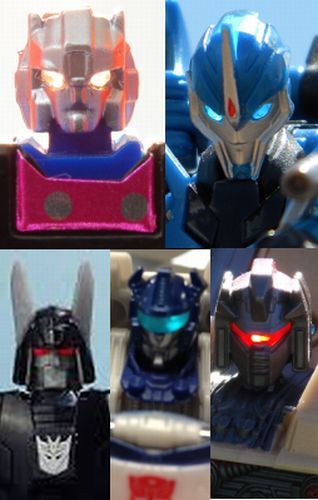
Originally introduced in late G1, light piping is a simple but effective way to light up parts of a Transformer toy (e.g. eyes, headlights etc.) by simply inserting a translucent plastic part that becomes illuminated when in contact with light. It's complete lack of reliance on electronics makes this a very non-intrusive gimmick, and thus doesn't impede on design and engineering of toys.
4. Gestalts
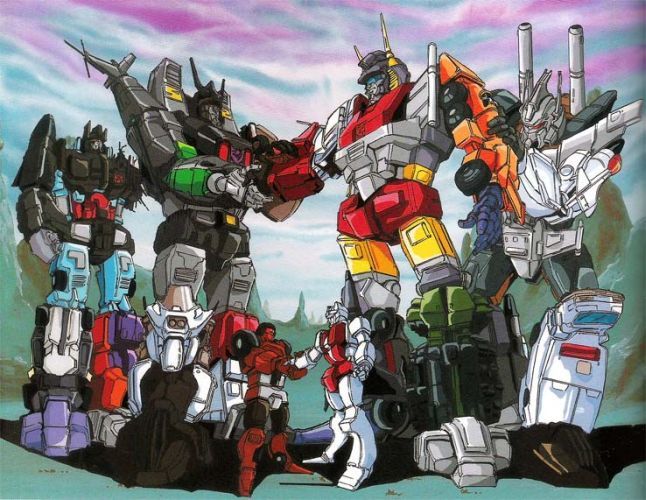
Who doesn't love transforming robots who can merge to become an even bigger robot?  It was also a very clever sales gimmick because obviously it further encouraged kids to complete an entire set in order to build the gestalt robot. 1986 introduced the idea of "Scramble" gestalts, able to swap limb component Transformers around, even between different teams. 1989 introduced two interesting gestalt teams: Multi Force and Breast Force. The former are omnicombinational - any member can combine with another member to form a duocombiner. So the 6 members of Multi Force can make up to thirty different combinations!
It was also a very clever sales gimmick because obviously it further encouraged kids to complete an entire set in order to build the gestalt robot. 1986 introduced the idea of "Scramble" gestalts, able to swap limb component Transformers around, even between different teams. 1989 introduced two interesting gestalt teams: Multi Force and Breast Force. The former are omnicombinational - any member can combine with another member to form a duocombiner. So the 6 members of Multi Force can make up to thirty different combinations!  Then on top of that, they can all combine together to form a supreme gestalt robot (Landcross). On the Decepticon side was Lio Kaiser, who was the first Transformers gestalt to have almost all self contained gestalt parts. And that brings us to my next point...
Then on top of that, they can all combine together to form a supreme gestalt robot (Landcross). On the Decepticon side was Lio Kaiser, who was the first Transformers gestalt to have almost all self contained gestalt parts. And that brings us to my next point...
3. Self Contained Weapons & Accessories
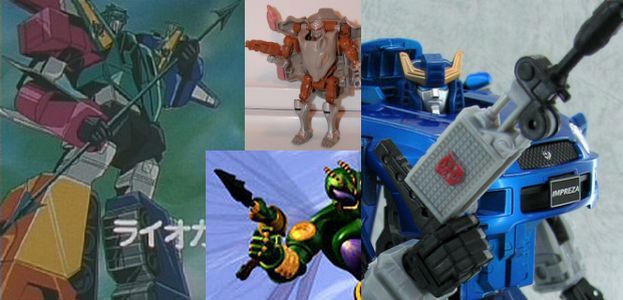
Losing stuff sucks. And it often happens with toys with "set aside" accessories. It becomes a lot easier to keep track of weapons and accessories when they are either in-built, or are able to be either incorporated or stored in the alt mode. In-built accessories are not designed to be removed, so an example of this would be Classics Megatron's non-detachable arm cannon. BT/ALT Meister is an example of a toy with incorporated weapon, his gun transforming into the the Mazda RX-8 mode's muffler. The original BW Rattrap is an example of a toy whose weapon is stored in his alt mode. As mentioned previously, Lio Kaiser was the first gestalt to have almost all self contained gestalt parts. Only his head is actually detachable, every other part (e.g. fists, feet) are built into the individual components. A far cry from say Devastator whose gestalt form is highly reliant on detachable (and losable!) accessories. Beast Wars then gave us the first completely self contained gestalt parts (Magnaboss & Tripredacus). It's impossible to lose any gestalt parts without breaking a toy.
2. Articulation
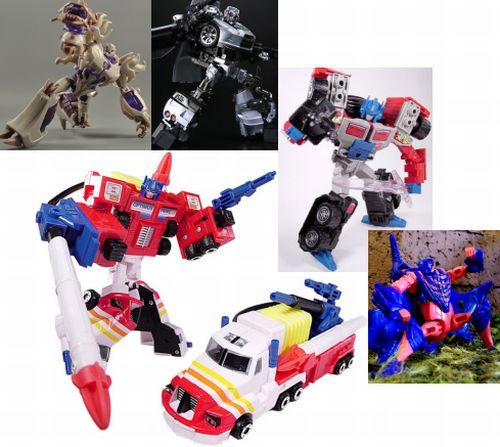
By this I'm talking about meaningful articulation to allow the robot to be a fully posable action figure (and not just "incidental" articulation that exists by virtue of the toy's transformation, e.g. original G1 Optimus Prime's arms etc., I mean articulation made for the sake of articulation). This was something that first cropped up in mid to late G2 with toys like the Combat Heroes, Laser Rods and Cyberjets featuring fully articulated robot modes. Beast Wars then standardised and refined this concept, giving rise to the ball-and-socket joint. Nowadays it's just standard for Transformers to have at least 9 points of meaningful articulation, but once upon a time (i.e. pre-1994) it wasn't uncommon for Transformers to have very limited "brick" like robot modes. Perhaps it's fitting that as we now prepare to commemorate the 30th anniversary of Transformers that we reflect upon what may have been one of the the greatest legacies of the Transformers' relatively low-key 10th year.
1. 5mm post
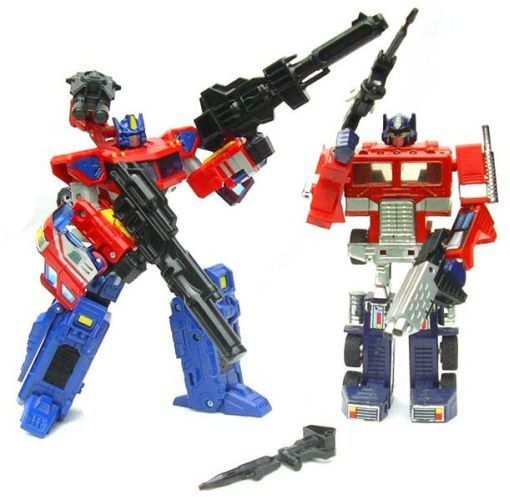
The simple idea of a universal weapon post size means that any Transformer with a 5mm post can use any 5mm post weapon. This gimmick has actually been around since 1984, so it's nothing new, however the Unicron Trilogy is known to be the "Golden Age" of the 5mm post. The 5mm has continued to be in use, with the Dark of the Moon MechTech gimmick being reliant on 5mm posts, and all non-Cyberverse TF Prime figures also using 5mm post weapons (hence allowing TakaraTOMY to introduce Arms Microns). Revenge of the Fallen gave rise to another cross compatible weapon system known as the C joint or Miyake joint.
Last edited by GoktimusPrime; 1st January 2014 at 11:00 PM.
 Posting Permissions
Posting Permissions
- You may not post new threads
- You may not post replies
- You may not post attachments
- You may not edit your posts
-
Forum Rules
It was also a very clever sales gimmick because obviously it further encouraged kids to complete an entire set in order to build the gestalt robot. 1986 introduced the idea of "Scramble" gestalts, able to swap limb component Transformers around, even between different teams. 1989 introduced two interesting gestalt teams: Multi Force and Breast Force. The former are omnicombinational - any member can combine with another member to form a duocombiner. So the 6 members of Multi Force can make up to thirty different combinations!
Then on top of that, they can all combine together to form a supreme gestalt robot (Landcross). On the Decepticon side was Lio Kaiser, who was the first Transformers gestalt to have almost all self contained gestalt parts. And that brings us to my next point...


















 Reply With Quote
Reply With Quote